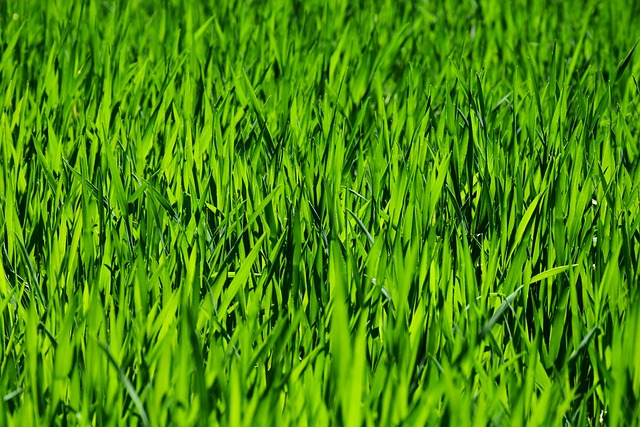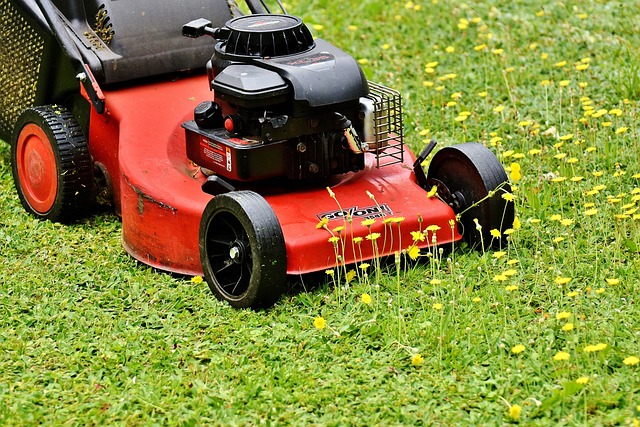Mulching and edging are crucial components of effective Lawn Care and Landscaping. Mulch improves soil health, retains moisture, suppresses weeds, and enhances lawn appearance (while edging creates neat boundaries, prevents weed intrusion, and contributes to the overall aesthetic appeal and maintenance ease of your outdoor space). Integrating these practices fosters grass growth, maintains landscape definition, and promotes a lush, well-tended yard throughout all seasons.
Transform your lawn from ordinary to extraordinary with the power of mulching and edging. This comprehensive guide explores the art and science of these essential lawn care practices. Discover how mulching enriches soil, suppresses weeds, and conserves moisture, while precise edging defines edges, enhancing overall landscape beauty. Learn best practices for both techniques, combining them for optimal results in lawn care and landscaping. Elevate your outdoor space with these simple yet effective strategies.
- Understanding Mulching: The Benefits and Best Practices
- Edging Techniques for Neat and Well-Defined Lawns
- Combining Mulching and Edging for Optimal Lawn Care and Landscaping
Understanding Mulching: The Benefits and Best Practices

Mulching is an essential practice in lawn care and landscaping, offering numerous benefits for your outdoor space. By adding organic or inorganic material to the top layer of soil, mulching improves the overall health and appearance of your lawn. One of its key advantages is water retention; mulch acts as a barrier, reducing evaporation and keeping moisture around the roots, which is crucial during dry spells. This simple technique also suppresses weeds effectively, preventing their growth by blocking sunlight and disrupting their life cycle.
When implementing mulching practices, it’s best to choose the right type for your needs. Organic mulches, such as wood chips or straw, are popular choices due to their ability to decompose and enrich the soil over time. In contrast, inorganic mulches like stone or rubber chips provide longer-lasting solutions but do not enhance soil fertility. The best practice involves applying a layer of mulch that is 2-4 inches thick, ensuring proper coverage without smothering plant life. Regularly replenishing the mulch will maintain its effectiveness and create a lush, well-maintained lawn, enhancing your outdoor landscape.
Edging Techniques for Neat and Well-Defined Lawns

Edging is a crucial aspect of lawn care and landscaping, allowing you to achieve neat, well-defined edges along pathways, beds, and other areas. There are several effective techniques to consider when edging your lawn, each offering unique benefits for maintaining a polished look. One popular method involves using manual edgers or string trimmers, which offer precise control over the cut line. This technique is ideal for straight or slightly curved edges around flower beds and trees.
For more complex landscapes with intricate patterns or curved pathways, consider investing in an edging tool like a plastic or metal edge. These tools can be installed along the desired edge, creating a clean separation between your lawn and other plants or hardscape features. This approach ensures consistency and minimizes the risk of uneven cuts. Effective edging not only enhances the visual appeal of your lawn but also helps to prevent weeds from encroaching onto your manicured space.
Combining Mulching and Edging for Optimal Lawn Care and Landscaping

Combining mulching and edging is a powerful strategy for enhancing both lawn care and landscaping. Mulch, by retaining moisture, suppressing weeds, and gradually breaking down to enrich the soil, creates a healthy environment for grass growth. Edging, on the other hand, defines the boundary between your lawn and paths or flower beds, providing a neat and polished look. Integrating these practices allows you to achieve both aesthetic appeal and functional benefits.
By mulching around the base of plants and trees while maintaining sharp edges along pathways and borders, you can create a visually striking landscape that is also easy to maintain. This dual approach not only preserves the beauty of your outdoor space but also contributes to the overall health and resilience of your lawn, ensuring it remains lush and vibrant throughout the seasons.
Mulching and edging are essential components of effective lawn care and landscaping. By understanding the benefits and best practices of mulching, along with mastering various edging techniques, you can transform your lawn into a picture of health and beauty. Combining these two practices not only enhances the aesthetic appeal of your outdoor space but also promotes its overall well-being. Incorporate these strategies into your routine to achieve a lush, well-defined lawn that becomes the envy of the neighborhood.
